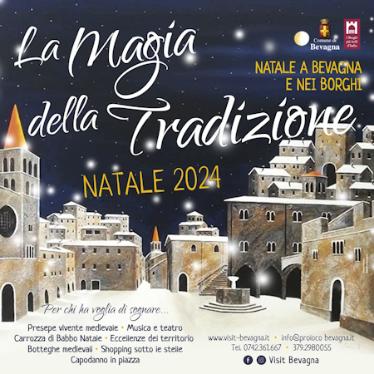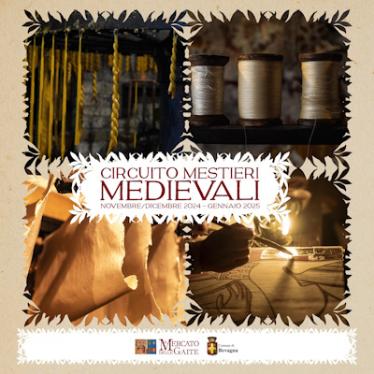HISTORY
An ancient Umbrian centre, the first documentation of it coincides with the Roman conquest of Umbria, when the Romans took over the area and built the western Via Flaminia (220 BCE) and other roads connecting to it. In the year 90 BCE, the town became an important Roman municipality by the name of Mevania. When the Empire fell, it became the object of various battles and was alternately dominated by Spoleto, Foligno, the Germanic Empire, Perugia and the Papal States. In 1439 it became part of the Papal domain and remained so, with the exception of the Napoleonic years, until the Unification of Italy in 1860.
ART AND CULTURE
The town, whose medieval (12th-13th century) urban layout remains intact, is surrounded by walls with towers and gates. The most conspicuous Roman remains are those of a temple, which was then transformed into what was once the Church of the Madonna della Neve, a thermal springs building, which still boasts a second-century BCE mosaic floor of white and black tiles depicting marine motifs, and, in the upper part of the town, an area where houses set in a semicircle trace the ancient theatre (two grooved marble columns now reside in the post office).
The old layout of the Roman city became medieval with piazzas and noble palazzos: on Piazza Silvestri is the Palazzo dei Consoli (1270), which hosts the Teatro Francesco Torti, the Romanesque churches of San Silvestro and San Michele Arcangelo, both constructed in the 12th century, and the Church of Santi Domenico e Giacomo (14th century). A fine example of residential architecture is provided by Palazzo Lepri, on Corso Matteotti, today the home of the city's administration. Inside the palazzo are the Library, the Historical Archives and the City Museum, of which one is devoted to archaeology and the other a picture gallery.
Also worthy of note is the Baroque church of the monastery of Santa Margherita and the church of San Filippo (1725). The Church of San Francesco (late 13th century) is located at the town's highest point. Next to the altar is the stone on which St. Francis leaned as he preached to the birds at Pian d'Arca.
Outside of town, on the surrounding hilltops, are the Sanctuary of Madonna delle Grazie (late 16th century), the Sanctuary of Madonna della Valle and the Convent of the Annunziata (11th century), once a castle constructed to defend the area.


































